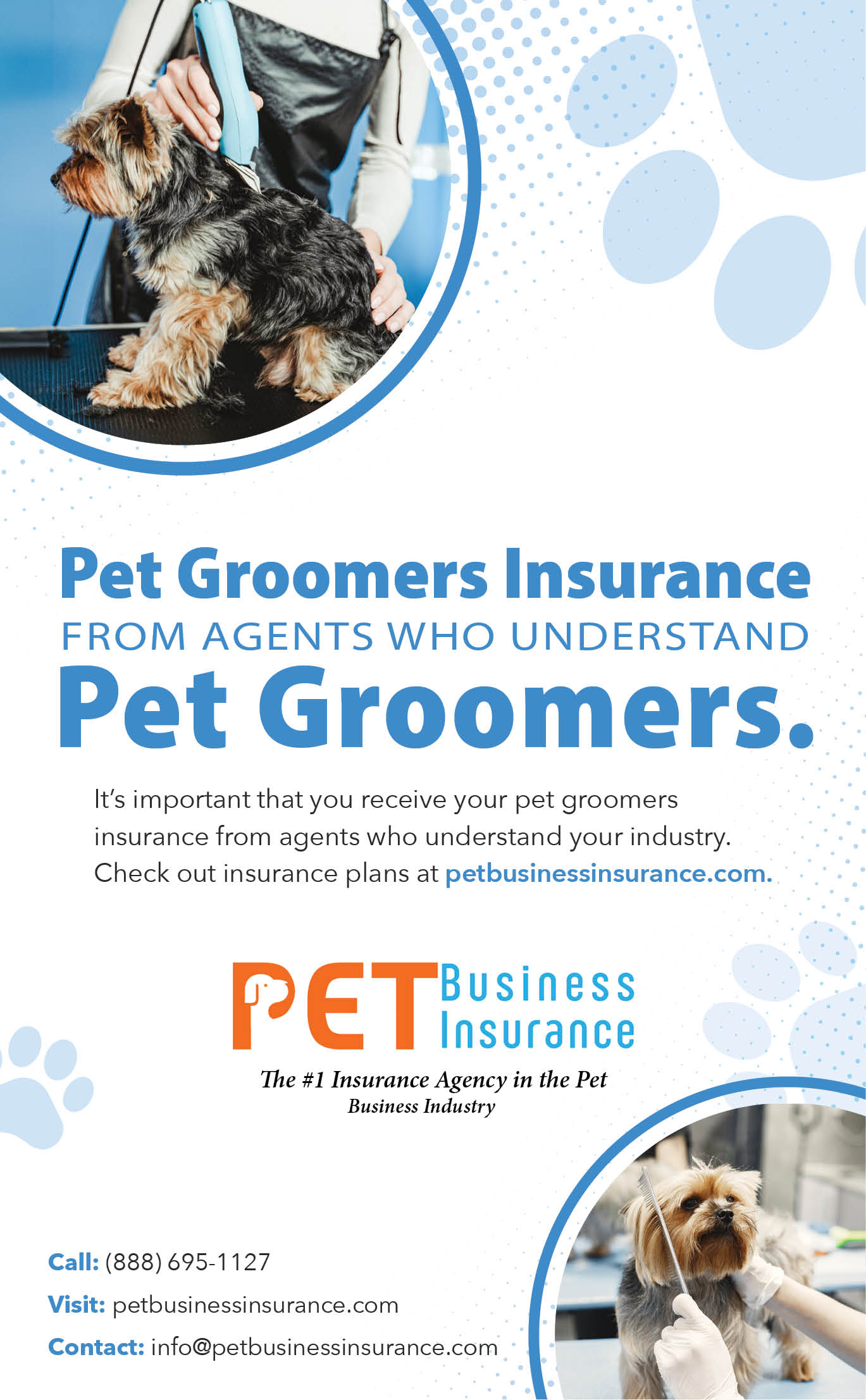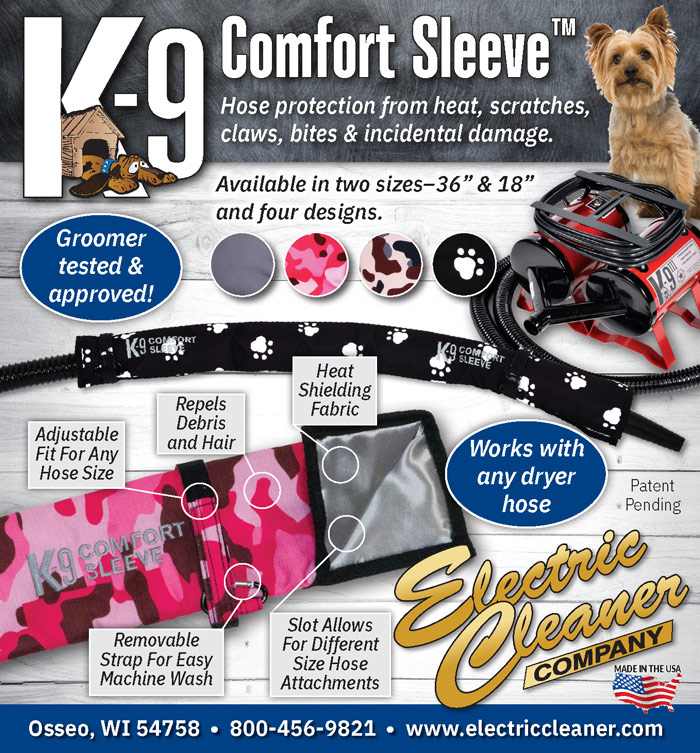
 s much as we want this not to be true, there have been incidents reported in the news throughout the United States of groomers abusing dogs entrusted to their care…some to the point of death. The subject of groomers abusing dogs is nothing short of agonizing to confront in our industry and among the worst things any of us could ever experience in our careers, but we cannot turn our eyes away.
s much as we want this not to be true, there have been incidents reported in the news throughout the United States of groomers abusing dogs entrusted to their care…some to the point of death. The subject of groomers abusing dogs is nothing short of agonizing to confront in our industry and among the worst things any of us could ever experience in our careers, but we cannot turn our eyes away.But for all intents and purposes, this is not a discussion about the global issue of people abusing all kinds of animals, nor is it about all animal suffering—this is about us and the pet grooming industry. This is about pet groomers losing their temper and hurting the very pets we take money from people to care for. And while it is truly hard to think about, the good news is that there is a lot we can do about it, both in prevention and management. It starts with being able to talk about it…with our eyes wide open.
There are professionals in several fields that are working to understand, prevent and educate about this problem. One factor to consider is that pet groomers work in so many different venues: alone in a mobile unit, alone in a retail shop, as an employee in a big box store, in a small salon with a small staff, as a house-call groomer, out of our own homes, or affiliated with a similar business such as a boarding facility, daycare or veterinary hospital.
- Examine yourself and be honest with yourself. Keep a journal, writing a few minutes each day about insights you have into yourself. A quick list of self-observations is helpful; you don’t have to write a novel.
- No one of us is perfect. We have all lost our tempers from time to time and can all benefit from some daily self-examination. Don’t be afraid to see yourself for who you are.
- Practice self-monitoring for rising symptoms of stress. Do you feel your temper rising with a certain dog or client? Do you ever feel stressed, overwhelmed, frustrated? Are there stresses in your non-work life that are affecting your ability to do your job in a healthy way? Just stop working for a minute and take deep breaths. Set limits every single day in your work life to protect your health and well-being for the long term.
- Seek counseling and support for any issues that could potentially lead to trouble. And not just in this area of your ability to manage the dogs you groom, but in your overall health and stress levels. Everywhere in America there are low-cost and free community mental health services, sliding scale fees or free, not-for-profit counseling sources. Don’t try to tackle this alone—go talk to someone!
- Connect with a Master Groomer or other experienced groomers either near you or through the many online groomer communities or organizations. Ask for mentoring! Lots of us will be happy to do that for groomers who work alone.
Remember, even if you groom by yourself all day long, no one of us is truly alone. We are in a very large grooming industry that is part of an even larger pet industry. Everywhere there are more experienced groomers willing to just talk or to help with advice, resources and ideas. Find out if your state has a grooming association, and if it does, join it. Reach out. Make connections.

- Screen potential employees first with phone interviews before hiring. Always check references and do not hire without them.
- When considering a hire, run background checks on anyone that will be working with live animals.
- Ask directly during the interview process about temper control and anger management. Ask how they will handle a behavior issue with a dog and pay careful attention to vague answers. Take notes during the interview.
- Require and create incentives for staff to learn more about animal behavior management. There are dog training classes everywhere. For an excellent podcast devoted to the topic of how to manage behavior and the dog for grooming, I highly recommend Chrissy Neumeyer Smith’s “Creating Great Grooming Dogs.”1
- Practice scenarios with the entire staff to identify warning signs of rising frustration and stress, and go over the steps to take when these feelings occur.
- Post visual signs around the workplace positively stating safety rules and healthy reminders to take a break and ask for help when needed. Also verbally reinforce this often as you walk around supervising.
- Managers and owners should be frequently seen throughout the workday, so be sure to walk around and talk to your staff every day; don’t just stay at the front desk or in your office.
- Make this value central to your business culture. Write it near the very top of your employee handbook, model the loving care of the dogs that you expect of your staff and talk about it at regular staff meetings.
- Have security cameras throughout the business. There should be a camera on any space where the dogs will be throughout their time with you.
- For employees of a grooming business: If you SEE something, SAY something! Don’t worry that maybe you are misinterpreting what another employee is doing, and don’t worry about “getting a colleague in trouble.” Your reports to a manager are confidential, and all you must say is that you saw something that “may be of concern,” then leave it up to management. That is on them. Your job is first and foremost to be a voice for all the animals in your care.
Supreme Court Justice Louis Brandeis famously said in 1914 that “sunshine is the best disinfectant.” These wise words help us realize that keeping bad things hidden only makes them worse. Justice Brandeis was talking about how important transparency is to an organization to prevent corruption. This can similarly apply to the grooming industry, as groomer abuse of pets sadly does sometimes happen. Ignoring it or pretending it does not exist will not help it go away.
All the dogs who go home groomed and happily cared for deserve for us to prioritize this. There is no better “thank you” for grooming with gentleness and understanding than the wagging tail and slobbery kiss from a dog when we show them nothing but the love they deserve.
- Creating Great Grooming Dogs Podcast: https://www.creatinggreatgroomingdogs.com/
- AKC S.A.F.E (Safety, Assurance, Fundamentals, Education) Grooming Program: https://www.akc.org/products-services/akc-safe-grooming-program/
- PPGSA Standards Of Safety, Care & Sanitation: https://petgroomersandstylists.org/standards
- Master Groomers Council on Best Practices (MGCBP): https://mgcbp.com/
Humane Society Of The United States: What you can do to help stop animal abuse: https://www.humanesociety.org/resources/report-animal-cruelty
American Humane Association: Animal Abuse Fact Sheet: https://www.americanhumane.org/fact-sheet/animal-abuse/
Four Paws USA: Ten Tips To Prevent Animal Cruelty And Abuse: https://www.fourpawsusa.org/campaigns-topics/topics/companion-animals/preventcrueltytoanimals/ways-to-prevent-cruelty-to-animals
Mayo Clinic: Ten Tips To Tame Your Temper: https://www.mayoclinic.org/healthy-lifestyle/adult-health/in-depth/anger-management/art-20045434
Psych Central: Seven Proven Ways To Avoid Losing Your Temper At Work: https://psychcentral.com/health/avoid-losing-temper-at-work




